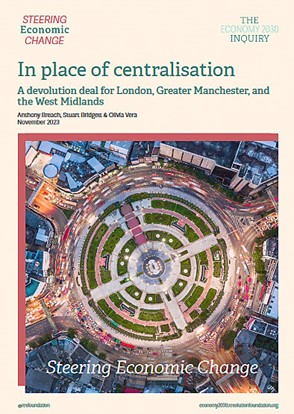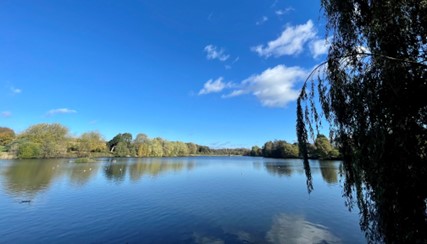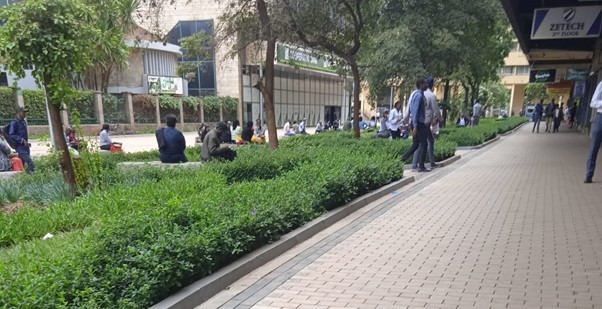Alison Donald
This week we are showcasing key findings from some recent dissertations by our Degree Apprentices. Public sector digital transformation aims to use digital tools, technologies and approaches to support transformation. As public servants increasingly work remotely in virtual teams, what are the implications for councils? Lessons learnt during the Covid-19 pandemic, when councils had to onboard new staff by digital processes into an almost exclusively ‘virtual’ workspace, provide invaluable guidance for future remote working in public services. This dissertation examined ‘onboarding’ and ‘induction’ of new starters in a remote working environment.
Key findings:
- The impact of digital transformation on public service staff has received little research attention.
- Remote or virtual working is increasingly important, leading to concerns around reduced (interpersonal) interaction, staying on-task and communication challenges
- The dissertation found that the most positive induction experiences were those where new starters had daily contact with a named ‘buddy’ and regular contact from their line manager, in their first few weeks. Virtual new starters can miss opportunities to ask questions informally during the induction process
- There are also a range of relatively simple measures that councils can take which help staff to socialise into their new teams. The content of induction processes often does not cover key cultural issues such as the role of councillors and the structure of the council.
- A survey of new staff can both tested the overall degree of process compliance and highlight any gaps in routine processes that could negatively affect new starters.
- The dissertation identified some key improvements to inductions for remote staff, including developing a comprehensive single reference resource for new starters with clear links to relevant training and reference resources, increasing the use of videos and interactive material, and establishing new starter groups to provide a safe place for individuals to ask naïve questions and share experiences.
Background
The Covid pandemic led to rapid adoption of remote working across the public sector, with two-thirds of public administration employees working continuously at home according to a Sept 2020 survey by the Chartered Institute of Personnel and Development (CIPD). This has accelerated an existing trend towards greater remote working and the use of virtual teams.
This dissertation centred on a two-tier county authority where a transformation policy to promote remote working has been in place for some years. Employees have been provided mobile devices and remote access to drives and applications, primarily to increase flexibility enabling better delivery of services to customers. The policy also aims to make the best use of resources such as office space and improve the work/life balance and wellbeing of employees.
The key dissertation research questions were “how effective have virtual onboarding and induction arrangements been at during the transition to widespread remote working in the COVID-19 Response period?” and “how might the policies, procedures and practice be made more effective given the on-going requirements for digital working?” The fieldwork involved a survey of 130 new starters at the case study council from the start of Covid-19 Response in March 2020 to the end of August 2020, aimed to cover all staff undertaking remote induction processes (the response rate was 55%).
What we knew already
Public sector digital transformation aims to use digital tools, technologies and approaches to support transformation. The impact of this on public service staff however has received little attention. Research by the LGA highlighted that one of the core challenges for organisational transformation is to deliver behaviour and culture change within organisations. Meanwhile, the New Local Government Network emphasised the need to change culture and ‘trust staff, in all job roles, to innovate and develop digital competency’.
Most of the existing research on induction focusses on the employer perspective, with less consideration given to the importance of employee perceptions and the impact that the induction process has on their on-going commitment, productivity, and creativity in the role. Research shows that poor practice in inducting new staff undermines their capacity to contribute to value creation and increases employee turnover and costs. Conversely, employers who create high trust / high commitment relationships with employees, develop organisational cultures in which employees work beyond their job description, and who are more creative and innovative.
Remote or virtual working is increasingly important, with a government-sponsored survey in 2020 suggesting 70% of employers were expecting to expand or introduce working at home on a regular basis. Increasingly public servants will operate in virtual teams, as geographically dispersed groups of workers coordinating their work mainly through information and communication technologies. Research has identified concerns including reduced (interpersonal) interaction, staying on-task and communication challenges. Addressing these concerns requires the recreation of ‘water cooler moments’ and making time for informal (social) relationship building, beyond sharing task-related communications. But less than a fifth of virtual teams receive training on how to work together effectively.
Social contract and socialisation
The dissertation found that the most positive experiences were those where new starters had daily contact with a named ‘buddy’ and regular contact from their line manager, in their first few weeks.
There are also a range of relatively simple measures that councils can take which help staff to socialise into their new teams, such as the use of ‘photo galleries’ of key personnel for email, using cameras during virtual meetings, more frequent provision of informal ‘digital coffee break’ meetings and more ‘screen-share’ time with team colleagues to replicate the ‘over the desk’ type of queries and to assist new starters in navigating the induction process.
Access to systems, websites, MS Teams and resource materials
With regard to induction systems and materials, new starters working virtually missed opportunities to ask questions informally during the induction process, for example regarding accessing documents and learning materials. The dissertation also identified opportunities to rationalise the number of different sites new staff were expected to navigate during their induction, and some practical issues such as broken links in induction materials.
Technical support
New staff may find it difficult to navigate HR and IT support systems virtually. Managers needed to orient their new-starters to the digital culture of the organisation, and many find one-to-one sessions on navigating the technical systems helpful.
Cultural context and communications
The content of induction processes often does not cover key issues such as the cultural context. For councils, this might include the role of councillors and the structure of the council. Regular updates from senior officers are valued sources of information and socialisation.
How effective are your induction processes?
With increased remote working, a level of immediate and accessible support that would formerly be offered by colleagues and managers ‘across the desk’ is now lacking. Remote inductions can suffer from the lack of a social dimension in introducing new starters to the organisation and explaining induction materials. Councils need to test whether their processes are fit-for-purpose in the new operational circumstances. Systematically asking new employees for feedback on their induction can identify issues with the tone and content of the process and materials used.
The key outcomes from the dissertation project were a set of validated findings on the effectiveness of the induction process and from which recommendations for future action could be derived. The quantitative part of the survey tested each of the elements of the onboarding and induction processes, as previously prescribed, which managers have been expected to follow. The findings both tested the overall degree of compliance and highlighted any gaps in routine processes that could negatively affect new starters. These could impact, for example, on a new employee’s compliance with data protection regulations.
Improving inductions for remote staff
The dissertation identified some key improvements to inductions for remote staff, including:
- Developing a comprehensive single reference resource for new starters with clear links to relevant training and reference resources.
- Increase the use of videos and develop more interactive material, for example in giving guidance about how to set up a safe work-station or how to access IT support, and to introduce senior managers.
- Set-up new starter groups to provide a safe place for individuals to ask naïve questions and share experiences.
- Facilitate regular orientation sessions for all new starters: ideally including an appearance from a senior member of the leadership team, a councillor such as the relevant cabinet member, and an employee’s network representative.
- Undertake new starter surveys periodically to confirm the effectiveness of the arrangements and learn of any further improvements that might be made.
Conclusions
As councils adopt digital transformation, virtual working is becoming increasingly important and potentially problematic. The effective induction of new team members is essential, but adapting traditional processes can lead to difficulties. The dissertation provides useful guidance and ideas on how councils can help new staff become fully effectively quickly by re-thinking parts of their approach to induction and routinely checking its efficacy with those involved.
_________________________________________________________________________________
About the project
This research was a Master’s dissertation as part of the MSc in Public Management and Leadership, completed by Alison Donald and supervised by Dr Peter Watt.
Further information on Inlogov’s research, teaching and consultancy is available from the institute’s director, Jason Lowther, at [email protected]










